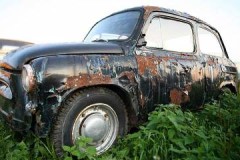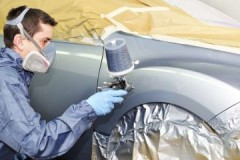What is auto-plasticine with rust converter and how to use it?
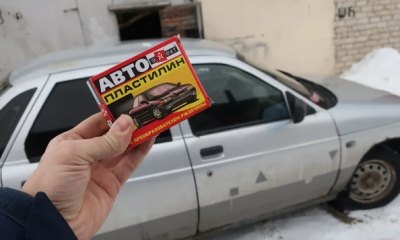 A headache for all car owners is rust, which can appear even on a new vehicle.
A headache for all car owners is rust, which can appear even on a new vehicle.
On sale you can find various compositions designed not only to save, but also to protect the metal from corrosion.
One of these products is auto-plasticine with a rust converter - read about what it is and how it works in the article.
Content
What it is?
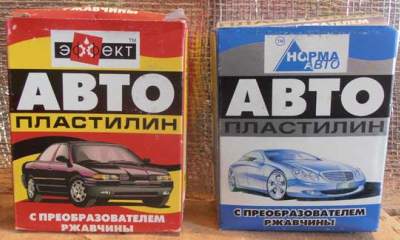 Autoplasticine with a rust converter is a plastic tool that looks like an ordinary plate for children's creativity.
Autoplasticine with a rust converter is a plastic tool that looks like an ordinary plate for children's creativity.
Its main feature is its unique composition, thanks to which the tool is actively used by motorists.
Autoplasticine has increased resistance to water, it is not afraid of high humidity, so it is used in those places that need additional protection from rust.
Drivers call autoplasticine a joint sealant, which has the ability to transform metal oxides into a protective film. This tool can rightfully be attributed to one of the varieties of converters.
The composition is not toxic... It possesses thermal and frost resistance, as well as good adhesion to any surface. The shelf life of the product is not limited.
Principle of operation
The principle of operation of auto-plasticine with a rust converter is quite simple. Its application to a specific area of the car allows you to reliably seal the metal surface.
Thanks to this protection, contact with:
- water,
- air,
- dirt,
- dust,
- melted snow,
- salt,
- reagents and other substances that contribute to the appearance of rust.
Plasticine can be safely applied to those areas that are already covered with rust, but they must first be cleaned.
Scope of application
On sale you can find auto-plasticine for processing thresholds, for applying to the bottom of a vehicle or to a body, but completely cover the body part of the car with them.
Autoplasticine is applied pointwise. Its main field of application is in the sealing of joints.Although this recommendation is general, therefore, before you start using autoplasticine, you need to read the instructions for its use.
Main directions of use:
 treatment of cracked areas;
treatment of cracked areas;- smearing of areas in which the sealant does not fit well;
- brake pipe lubrication;
- sealing cavities prone to accumulation of dirt and dust;
- processing of hard-to-reach rusting areas;
- protection of car fenders from corrosion.
Almost any surface prone to oxidation can be treated with autoplasticine.
Features of use
You need to use auto-plasticine correctly. If you deviate from the instructions, it is highly likely that the tool will be ineffective. It is its irrational use that explains the fact that some drivers consider it useless.
Procedure:
- Before picking up the sealant, grease them with glycerin. Some car owners use plain water, but this should not be done. Water reduces the adhesive properties of plasticine.
- The amount of plasticine that will need to be used in a particular case is separated from the total mass.
- The composition is kneaded in the hands to increase its plasticity. When this can be achieved, it is smeared over the surface of the metal.
- All gaps and cracks must be carefully sealed with plasticine so that water cannot get inside.
- Work with the composition quickly so that it does not dry out.
- After completing the procedure, hands should be thoroughly washed with soap.
The video will tell you about the use of autoplasticine:
How to choose a product?
When choosing auto-plasticine for your vehicle, preference should be given to the sealant that contains a rust converter. This will get rid of existing corrosion and prevent its reoccurrence.
Where and for how much to buy?
It is not difficult to purchase auto-plasticine with a rust converter. It can be bought in motorist stores... If funds are not available, the order is placed on the Internet.
The cost depends on the manufacturer, region and place of purchase. The average price of auto-plasticine is about 100 rubles.
Top 3 best
There are several varieties of auto-plasticine on sale from different companies. The top 3 best remedies are as follows:
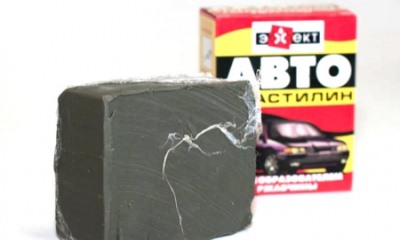 Autoplasticine with rust converter "Effect". It is produced by PolyKomPlast. The cost of a bar weighing 500 g is 75 rubles.
Autoplasticine with rust converter "Effect". It is produced by PolyKomPlast. The cost of a bar weighing 500 g is 75 rubles.- Autoplasticine with a rust converter from the Khimprodukt company. The cost of a bar weighing 300 g is 65 rubles.
- Avtoplasticine from the Polikomplast company. The price for a bar weighing 500 g is 105 rubles.
Helpful information
To make the use of plasticine in practice effective and allow you to achieve the desired result, the following recommendations must be observed:
- The first time you use autoplasticine, you must carefully study the instructions.
- Auto-plasticine can only be applied to a cleaned surface. It should not only be washed, but also defatted. Do not distribute the product on wet metal.
- The maximum heating temperature for auto-plasticine is 25 degrees. When this range is exceeded, the product loses its plasticity.
- You need to apply the composition to those areas that are not exposed to direct sunlight. Otherwise, the product will simply melt.
- On sale you can find light and dark plasticine. It is better to choose the sealant that is suitable for painting a car. Then it will be less visible on the metal surface.
- If it is necessary to remove the clay, it is simply heated. To do this, it is enough to direct a stream of warm air onto the putty.
You can find out about the ways and methods of removing rust from a car in this section.
Conclusion
Autoplasticine with rust converter helps prevent corrosion on the bottom of the car, on its fenders and other parts.
This inexpensive product acts as a sealantstrengthened by the properties of the converter. In order to achieve the maximum effect, the composition must be used in accordance with the instructions.


